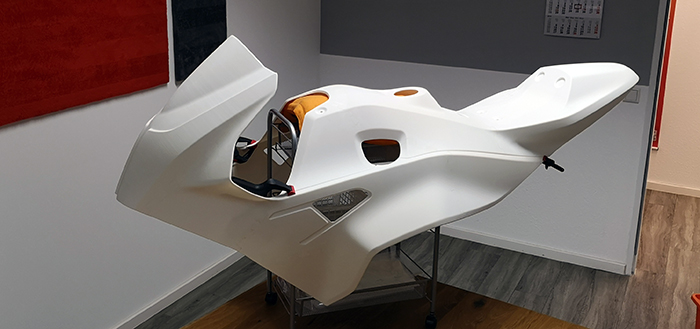Creabis, a Kirchheim-based 3D printing service bureau, is using Relyon Plasma’s piezobrush PZ2, a handheld cold plasma device, to bond 3D printed parts.
The piezobrush PZ2 uses plasma to activate surface particles of a substance which strengthens the adhesion between joined parts. With a strong bond between assembled 3D printed parts, it is possible to manufacture large-sized sturdy components on small sized 3D printers.
According to the CEO of Creabis, Ralf Deuke, plasma-aided bonding will lead to more novel applications in 3D printing.

Treating materials with plasma
Founded in 2002, Relyon Plasma is a subsidiary of Japanese TDK Electronics. The Bavarian company specializes in plasma processing devices based on the Pulsed Atmospheric Arc (PAA) and Piezoelectric Direct Discharge (PDD) technology.
Plasma is a gas containing a charged and one or all of the neutral species: electrons, positive or negative ions, atoms, and molecules. The active substance in the plasma reacts with substances to remove layers of contaminants. Plasma treatments have been used before to improve the quality of 3D printing materials such as metal powders.
Relyon’s plasma devices can be used on metals, plastics glass, and wood surface. Its nozzle-based plasma generators prepare materials by cleaning and sterilizing the surface. Moreover, plasma treatment also improves the adhesion of paints and improves wettability of surface for ink application.
Handheld cold plasma brush
Creabis, which has SLS and Multi Jet Fusion capabilities, recently used the piezobrush PZ2 to bond several 3D printed parts together and build a full interior door trim for a German electric vehicle startup. The whole component was printed in four separate parts on an SLS machine using PA12. All four parts were then treated with cold plasma before applying cyanoacrylate, a fast-acting adhesive, to the parts.
In another application, a fairing for a sports motorbike was printed in twelve parts. The parts were bonded together after plasma treatment. According to Relyon, the fairing can withstand a wind pressure of up to 200km per hour and “internal tests reveal that the components treated with plasma technology have an adhesive bond that is three times stronger than that of untreated parts.”

To learn more about how 3D printing is transforming manufacturing subscribe to our 3D printing newsletter. For live updates follow us on Facebook and Twitter.
Register at 3D Printing Jobs board to receive career updates.
Featured image shows motorbike fairing glued together using piezobrush PZ2. Image via Relyon Plasma.


